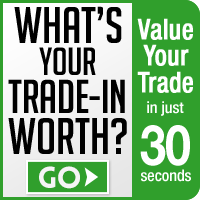Motorcycle Gear: Helmets
 Proper motorcycle safety involves buying the right motorcycle accessories. Riding a motorcycle is fun, but it does involve certain safety risks. Motorcycle gear helps protect you in the event of a collision. The most important item to buy, of course, is a helmet. We created a guide to finding the perfect helmet below. For all your motorcycle needs, visit Escondido Cycle Center. We serve Southern California and especially San Diego, California.
Proper motorcycle safety involves buying the right motorcycle accessories. Riding a motorcycle is fun, but it does involve certain safety risks. Motorcycle gear helps protect you in the event of a collision. The most important item to buy, of course, is a helmet. We created a guide to finding the perfect helmet below. For all your motorcycle needs, visit Escondido Cycle Center. We serve Southern California and especially San Diego, California.
Types of Helmets
There are a few broad categories of helmets to choose from. Each offer different amounts of protection, style, and comfort. The right one for you depends on your riding level, your riding experience, the type of riding you do, and your budget.
Think of it as a spectrum ranging from lowest protection to highest protection. At the far end on one side of the spectrum are half helmets. These offer the least protection as they leave your face and jawline fully exposed. People who choose this style often ride cruisers and choppers. They want stylish, edgy motorcycle gear to match their stylish, edgy motorcycle. This style is the most comfortable, but should only be worn by the more experienced riders.
In the middle of the spectrum of motorcycle safety is open face helmets. These offer some improvement to protection as they cover the ears and part of the jaw. They are more likely to stay in place in the event of a crash. Some come with a visor to protect the eyes from wind and rain.
At the end of the spectrum is full-face helmets. These cover the most amount of your face and provide the best protection. Most come with a face shield to protect your eyes. They tend to be made with better padding to give better comfort during the ride. But they can also be heavier and less breathable, which can be tough on hot days.
Crash Test Ratings
As you shop around for helmets, you may notice crash test ratings on the packaging. These come from two places - either a government agency (like the Department of Transportation) or a nonprofit (like Snell, which was made after sports car racer Pete Snell died from head injuries).
These ratings are intended to measure the helmet’s motorcycle safety capabilities. There are too many helmets out there that have undergone rigorous tests to justify buying a helmet that hasn’t. When you find a helmet you’re interested in, check to see what their ratings mean first.
The Right Fit
Few motorcycle accessories are as finicky with fit as helmets. You can throw on clothing that doesn’t fit quite right and still enjoy protection from the sun, rain, wind, and debris. But an ill-fitting helmet will be compromised in its ability to protect you.
One place to start is by figuring out your measurements. Your head size will relate to how big of a helmet you will need. Your head shape will relate to how the helmet lines up with your forehead, jaw, etc. You can find easy sizing charts online before you head to the store.
As you try options on, ask yourself a few questions:
- Does it pinch at your jawline?
- Does it wiggle or wobble when you move your head from side to side?
- Does it slide around when you roll your head forward?
- Does it leave any red spots after wearing it for a few minutes?
- Does it feel stuffy?
- Does it offer even weight distribution (to put less stress on your shoulders and head)?
If you answer “yes” to any of these, it is not the helmet for you!
Buying the proper motorcycle accessories is just one aspect of motorcycle safety. Your motorcycle also needs to be running well. If you need any parts replaced or your motorcycle to be serviced, visit Escondido Cycle Center. We proudly serve Southern California including San Diego, Temecula, Vista, and Oceanside, California.




